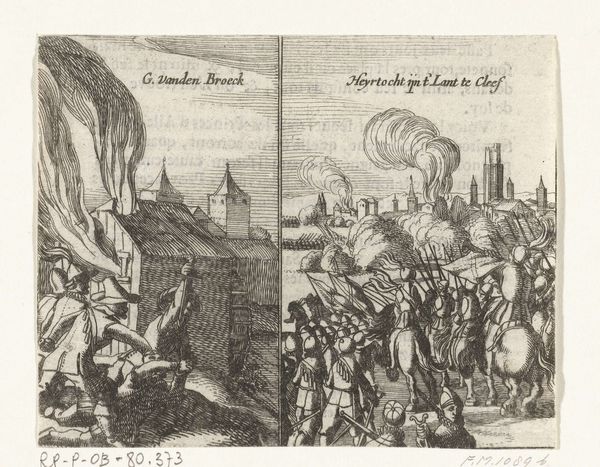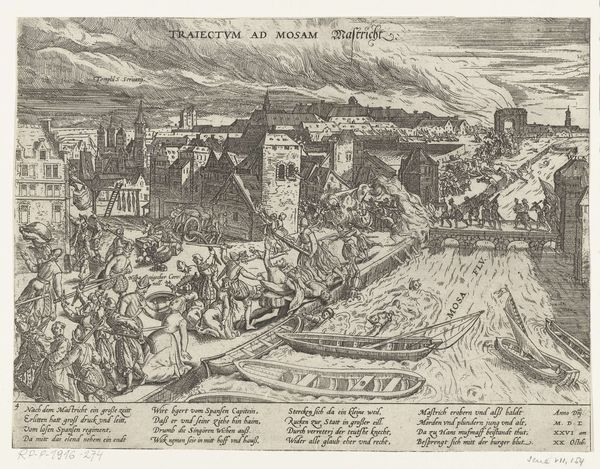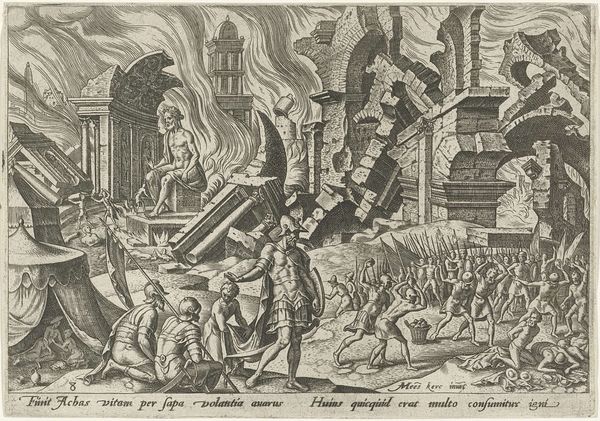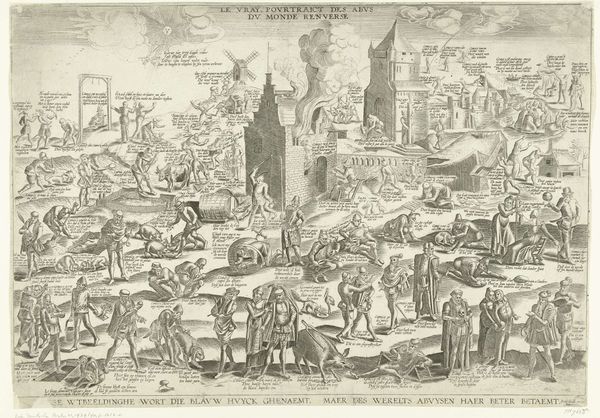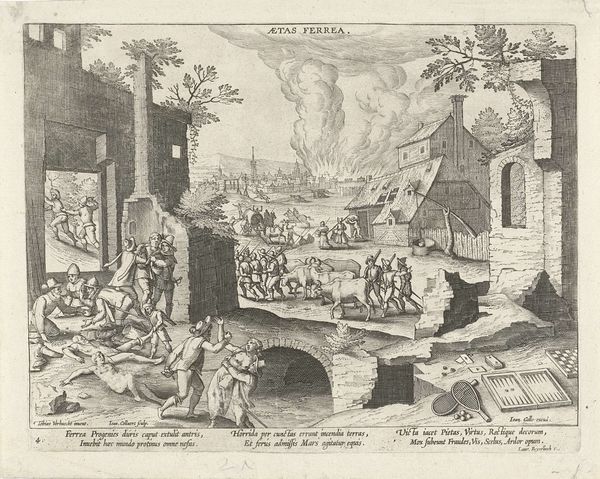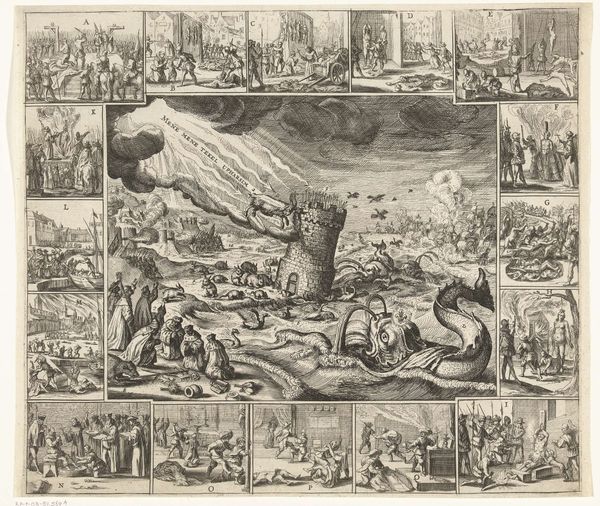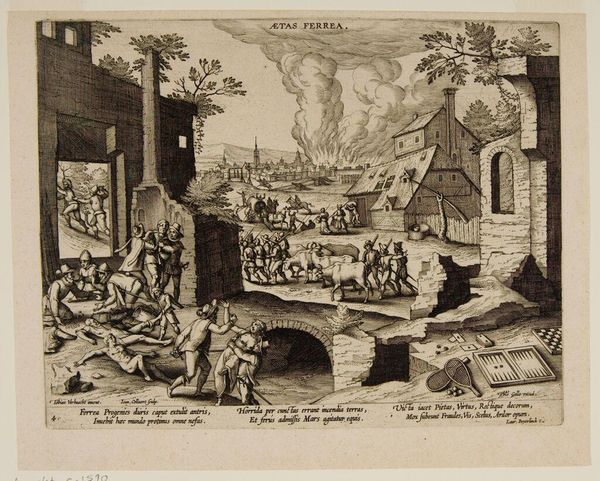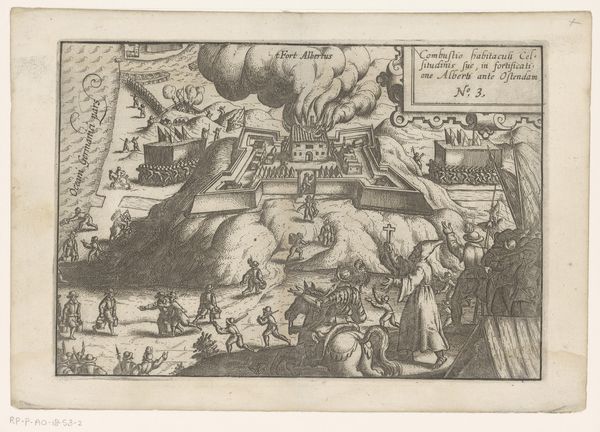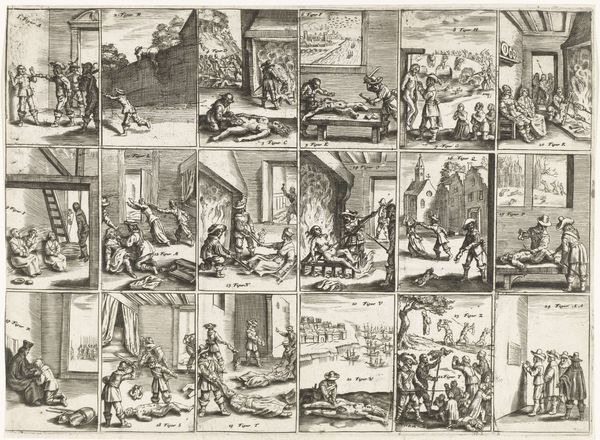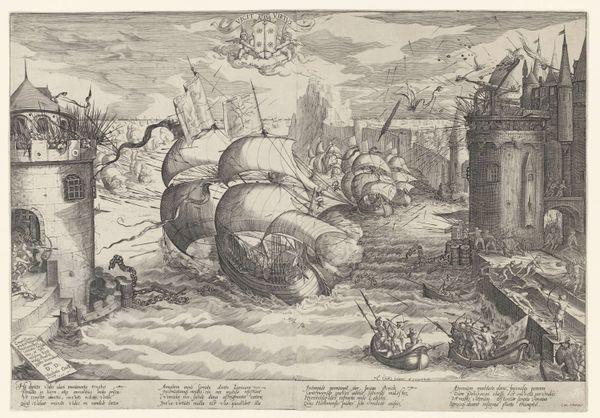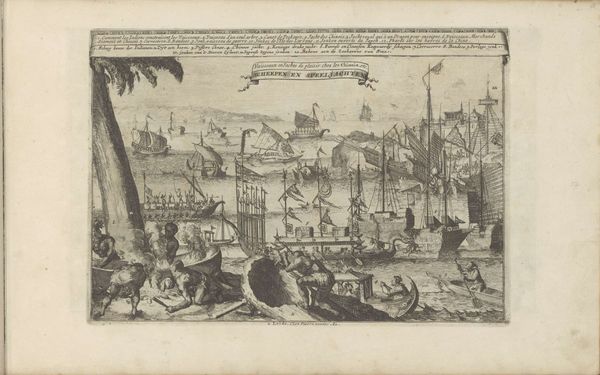
Plundertocht van de Spanjaarden in het land van Kleef en moord op Wirich von Daun, graaf van Falkenstein, 1598 1619 - 1621
0:00
0:00
print, engraving
#
narrative-art
#
baroque
# print
#
old engraving style
#
cityscape
#
history-painting
#
engraving
Dimensions: height 106 mm, width 129 mm
Copyright: Rijks Museum: Open Domain
Editor: This print, "Plundertocht van de Spanjaarden in het land van Kleef en moord op Wirich von Daun, graaf van Falkenstein, 1598," is attributed to an anonymous artist and dates from 1619 to 1621. The medium is engraving. I'm immediately struck by the sharp contrast between the detailed figures and the chaotic scenes of war. What visual elements stand out to you in this composition? Curator: Formally, I find the division into two distinct panels quite compelling. The left panel utilizes linear perspective to depict a large-scale military advance, with foot soldiers and cavalry moving towards a cityscape engulfed in smoke. Note the orthogonals created by the receding lines of soldiers, which draw the eye deep into the scene. Conversely, the right panel presents a more intimate, violent encounter. Editor: The contrast in scale between the two panels is very noticeable. While the left feels expansive and panoramic, the right is claustrophobic and brutal. Curator: Precisely. The engraver employs dense hatching and cross-hatching to create tonal variations, adding depth and texture. Observe how the flames are rendered with sharp, erratic lines, conveying a sense of intense heat and destruction. The figure of the slain count in the foreground becomes a focal point. Semiotically, the flames signify the disruptive forces of war, but also potentially a spiritual transcendence or purification. Editor: It’s fascinating how the artist uses line and composition to communicate such a strong narrative despite the limited color palette. Curator: Indeed. It demonstrates how the fundamental elements of art – line, form, and composition – can effectively convey complex narratives and evoke visceral responses. This piece prompts us to carefully consider the formal strategies employed in early printmaking, which carry meaning and structure the narrative. Editor: I'm definitely viewing prints in a new light now! Paying attention to the linework and contrasting panel designs really changes the way I understand it. Curator: My pleasure. Looking closely reveals how composition is paramount to creating effective narrative, whatever the artistic discipline.
Comments
No comments
Be the first to comment and join the conversation on the ultimate creative platform.
